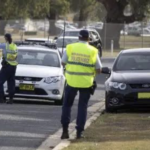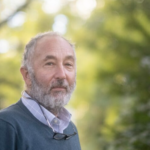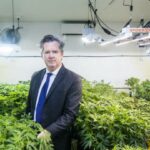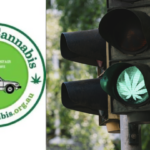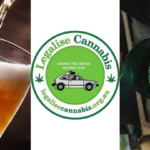Unimpaired Drivers Continue to Face Drug Driving Charges in New South Wales
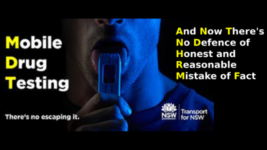
The NSW Police Force conducted the four-day-long driving safety offence blitz, Operation RAID (Remove All Impaired Drivers), last week, which resulted in the detection of 6,653 driving offences in total, as officers targeted three specific impediments to safe driving: alcohol, drugs and fatigue.
Operation RAID commenced at 12.01 am on Thursday 5 September and concluded at 4 am on Sunday the 8th. And in terms of major contributors to the state’s annual road fatality toll, 211 motorists were charged with drink driving offences, while as for illicit substances, 470 drivers were charged with drug driving.
NSW police officers further caught out 1,895 motorists for speeding, 261 were found to have been illegally using their mobile phone or partaking in other distracting activities whist driving and over 4,200 more driving offences were notched up on the belt of NSW police during its four day driving offence blitz.
And as is the habit of the NSWPF, it also managed to carry out a high speed chase in Albury on the first day of the crackdown, after a 31-year-old driving a Ford refused directions to pull over, and the brief high-speed chase resulted in them slamming their car into a tree, and a subsequent drink driving test turned up an alleged positive blood alcohol concentration of 0.06.
So, when looking at the testing figures, there appears to have been a disproportionate amount of drug drivers on the state’s streets as opposed to drunk ones, as 120,093 drink driving tests turned up 211 offenders, or 0.001 percent of all tested, while of just 10,885 drug driving tests performed, 470 motorists, or 0.04 percent of those tested had the presence of drugs in their system.
But the truth is that while the drink driving figures might serve as a measure as to the number of drivers impaired by alcohol out on the streets, the long-critiqued manner in which NSW police test drivers to ascertain whether they’re under the influence of illicit substances means those figures don’t provide any accurate representation of drivers who are a danger due to drug impairment.
A snapshot of NSW drink driving
According to the NSW government, road fatalities over the 12 months to 9 September this year are at 338, which is a 5 percent increase on 322 motor vehicle deaths over the 12 months to that same date last year, whilst serious road injuries rose by 8.6 percent from 9,711 in 2022 to 10,555 last year.
Given the 120,000-plus random breath tests (RBT) for alcohol performed on drivers last week turned up 0.001 percent of all tested as having breached the legal limit, which for most drivers is a blood alcohol concentration (BAC) limit of 0.05 grams of alcohol per 100 millilitres of blood, this gives a reasonable snapshot of what’s occurring on state roads in terms of drink driving.
The reason why this is a reliable measure is that 1982-introduced RBT laws contain BAC limits and the devices used can ascertain a precise reading of how much alcohol a driver has in their system. And these limits have been set in relation to scientifically-proven levels of alcohol that indicate that a driver is at a level of intoxication where they’re no longer safe to be on the road.
Section 110 of the Road Transport Act 2013 (NSW) contains the offence of driving with the presence of a prescribed concentration of alcohol in a person’s breath or blood, and it contains five separate drink driving offences that depend on a driver’s level of experience with differing BAC limits relating to each type of category of offence, which further highlights the accuracy of this system.
No idea about levels of those driving drug impaired
Operation RAID resulted in a higher percentage of randomly selected drivers from a smaller pool of roadside drug tests (RDT), testing positive for drug driving. Yet, unlike RBT, the RDT system that’s been utilised since 2007, gives no clear indication of whether a driver is actually impaired by an illicit substance they test positive to, as the system only tests for the mere presence of a few select drugs.
Section 111 of the Road Transport Act contains the offence of driving with presence of certain drugs (other than alcohol) in oral fluid, blood or urine and the devices used are only set to test for four prescribed substances: MDMA, amphetamines, THC in cannabis and cocaine. So, this means drivers using opioids, legal or not, prescribed benzodiazepines, psychedelics or ketamine go undetected.
But the clear injustice with these drug driving laws is that when a driver is fined and does lose their licence it’s in relation to the presence of the drugs in their system, and there’s no indication as to whether that driver was too impaired to be driving at point of testing, as people can still test positive for drug driving days or even weeks after having consumed a drug.
This is especially so for cannabis driving, as THC remains in the body for long periods after impairment. Indeed, because of the prevalence of drivers coming before former Magistrate David Heilpern, who were testifying as to not being under the influence of cannabis at time of driving, he handed down a series of rulings in Lismore court that saw those having tested positive acquitted.
No more excuses for drug driving
So, as for the 470 drivers charged with drug driving last week, all of them could plausibly have been pulled over whist driving unimpaired, or completely straight, but still going on to test positive due to having tiny traces of illegal drugs remaining in their systems from consumption in the past.
And unlike those drivers who were found by Magistrate Heilpern not to have been impaired when testing positive to cannabis driving back in 2016 and 2017, these days there is no room for such outcomes, as a July 2023 ruling of the NSW District Court found that drug driving is an absolute liability offence, which means the defence of honest and reasonable mistake is no longer available.
The finding that drug driving is an absolute liability offence was then upheld on appeal in February this year, despite the fact that the law is obviously unjust.
Heilpern has pointed out in the past that rather than continuing to apply these laws, a perfectly sound alternative already exists under section 112 of the Road Transport Act, which is the offence of driving whilst under the influence of alcohol or any other drug, and this is the law that was being applied prior to 2007, and it can be used to suffice until a better drug driving regime is installed.
Certain European nations have set drug driving limits. Norway was the first in implementing its regime in 2012, which provides driving level limits in relation to 20 nonalcohol drugs, with the Netherlands then having followed with its own set of drug driving limits in 2017, whilst Germany, which has just legalised cannabis, has recently too set a THC driving level limit law.
So, while last week’s Operation RAID may have revealed that forty years of RBT has resulted in eradicating drink driving for the most part in NSW, as for what was revealed in relation to RDT is that the NSW state is quite comfortable to continue to punish people who use drugs for doing so via roadside drug testing, but in terms of improving road safety in regards to drugs, its achieving little.


